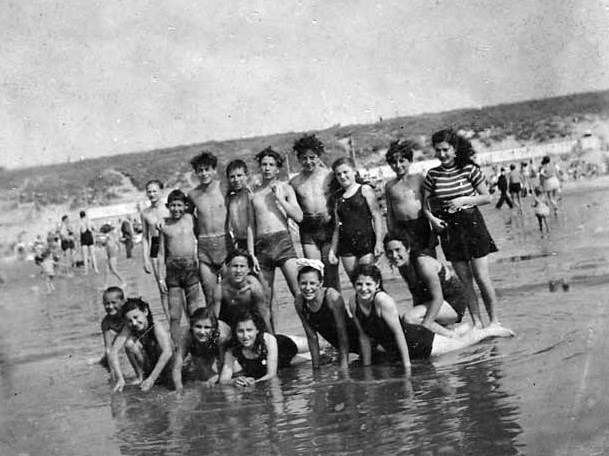The day marks the anniversary of the liberation of the extermination camp Auschwitz-Birkenau by the Soviet Red Army on 27 January 1945.
This year, because of the coronavirus crisis, the day will mainly be commemorated by online events in stark contrast to last year when the Israeli government invited 45 heads of state, prime ministers and parliamentary leaders from all around the world to attend World Holocaust Forum 2020 in Jerusalem, including the three presidents of the EU institutions.
Among the six million Jewish victims of the Holocaust were some 1.5 million Jewish children. Yad Vashem, the World Holocaust Remembrance Center in Jerusalem, has uploaded a new online exhibition, entitled “My Lost Childhood,” telling the moving stories of seven children's homes established after the war in Poland, Hungary, the Netherlands, Germany and France for child Holocaust survivors.
Children and teenagers experienced the Holocaust in all its brutality: in ghettos, in camps, in hiding, wandering from place to place, and on the death marches. They were the victims of abuse, humiliation, forced labour, starvation, neglect, and in some cases, even medical experimentation. Most of them lost their loved ones and were robbed of their childhood.
Survivors, including tens of thousands of children, were scattered all over Europe. The children were found in the liberated camps, Christian homes, monasteries and convents, as well as wandering the streets and forests.
"This exhibition sheds light on what Jewish children had to endure in order to survive and then rebuild their lives," states Dana Porath, Director of the Digital Department in Yad Vashem's Communications Division.
"But above all, it tells the story of the resilience of these children and how, despite their unspeakable traumas, the vast majority became fully contributing members to the countries in which they later settled."
Some homes operated for just a few months, others for several years. One of the children’s homes was located in the Netherlands, at the site of a former Jewish psychiatric hospital in Apeldoorn. All the patients at the hospital had been deported to Auschwitz, together with some of the staff, in January 1943.
The home was established in September 1947, with the consent of the Dutch government and in partnership with Dutch Jewish public organizations, when a Red Cross train left Bucharest, Romania, carrying 421 children who had been gathered from all over Romania and its orphanages, accompanied by 37 counsellors and four teachers.
The train reached the Netherlands via Prague, and the children were taken to the children's village, named Ilania (tree in Hebrew).
Zehava Hellman (Goldie Kaufman) was thirteen years old when she came to "Ilania". She recalls:
“After the hell of the camps in Ukraine and the institutions in Romania, the Netherlands was like paradise for me. … They weighed us, examined us, and took care of us. ... We were not regular children, we were Holocaust refugees, plagued by fears and nightmares. At night, the children would cry and scream in their sleep. They would even wet the bed.”
“They would go from bed to bed for fear of sleeping alone, fear of the dark, fear of just about everything. And how comforting it was to know that a night nurse was sleeping at the end of the corridor. As soon as she heard cries or screams, she would materialize like an angel and comfort us, even without knowing how to speak our language. I developed there, and I think my sadness abated.”
The Dutch government allowed the children to reside within its borders for three years, but after the establishment of the State of Israel, the decision was made to bring the children and their caretakers to Israel. In October 1948, the "Ilania" children boarded a ship for Haifa, Israel. A Dutch film crew documented the scene, and some of the footage is featured in the exhibition.
The Brussels Times

